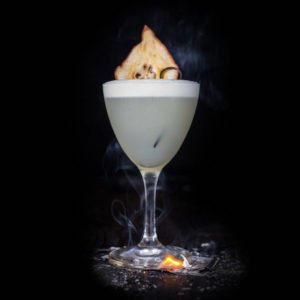Celebrate Tequila Day July 24

(Gerry Furth-Sides) Cheers to celebrating National Tequila Day on July 24th with curated cocktail recipes, a description of the tequila family tree and the merits of tequila that will tease out even more love for Mexico’s beloved drink.
Tequila is named after the 16th century town in which it was first produced. Even now only five states in Mexico that produce the spirit are allowed to use the tequila designation: Jalisco, Tamaulipas, Nayarit, Guanajuanto, and Michoacan. The freewheeling tequila process making has not only been refined over the centuries but now is a strictly enforced established process.
Herradura, for example, introduced its reposado (aged) to the tequila industry in 1974. It grew to international popularity within decades. It is an amber-colored tequila with notes of cooked agave, vanilla and butter complemented by a smooth and sweet finish with a touch of spice. Herradura is better suited to cocktails than for sipping. Fun fact: Herradura in Spanish means “horseshoe.” The story goes that the owner found one in the agave fields one day and named the company.
To see our full story on Herradura at //localfoodeater.com/why-historic-herradura-tequila/
We celebrate tequila as a separate beverage even though it is a mescal. That’s because tequila can only be made from one kind of agave plant: Blue Weber Agave (agave tequilana). And it must originate in specific regions of Mexico. Mezcal, on the other hand, can be made from 40 of kinds of agave, wild or cultivated. And Mezcal has its own day of honor in September!
Tequila fits into the realm of mezcal much like champagne, which is named for a specific region in France yet fits into the category of wine. For most drinking purposes, you can easily substitute a mezcal for a tequila without really changing the taste of a cocktail but tequila is usually meant for sipping.
This is why a tequila like Patron, known for its purity, is perfect on its own. Apparently we have shown our love of it; we have two suitcases of tequila gifts in our bar now!
Patron is made from 100% blue Weber agave grown in the highlands of Jalisco. The agave is harvested by hand and cooked in traditional brick ovens before being crushed and distilled. The beautiful distinguished bottles add a distinctive, recognizable touch. The numbered bottles give it an extra cache.
For recipes for a classic margarita version, a Horchata version, and even Hibiscus flavor recipes, please check here. For health-conscious tequila drinkers, Grand Velas Los Cabos mixologists suggest the Wheatgrass Margarita.
A novel twist to morning coffee arrives with Grand Velas Los Cabos’ recipe, Tequila Sunrise. Native to Guanajuato, Mexico, the tequila cream used is made with Blanco Tequila, coffee, milk, cinnamon, and anise adding a unique Mexican flavor.

The special smoky taste of Mezcal comes from the way it is processed. The heart of the agave plant, the piña, is traditionally slow-cooked in pit ovens, giving it a characteristic smoky flavor. The type of agave plant, as well as the aging process makes each mezcal batch unique.
Mezcal is produced in several states in Mexico, the most prominent being Oaxaca. These days, there are many more artisan versions fermented entirely with farmed agave or with wild agave. According to Philip Dobard of the Center for Culinary Culture, there are a handful of distilleries in all of Mexico producing spirits for 200 companies, Philip is a treasure trove of information he always shares with wit in crystal clear explanations. Follow him on //culinaryculture.center.
Since we were on this mild antibiotic this week-end, this cocktail just had to be included. It can also be made with tequila.
Amoxicillin Cocktail
Ingredients:
- Mezcal Espadin
- Pineapple
- Ginger
- Lemon
- Spicy Bitters
The Hernandez Family has been distilling at their El Rey Zapoteco Distillery in Matalán, Oaxaca since 1960. They are the oldest artisanal Mezcal brand in Oaxaca, which is considered being the heart of Mezcal making. They produce seven varietals on their own land, making El Rey Mezcal a true estate producer of premium Mezcal.
Want to make your own mezcal? Try sotol, a plant that grows all over southern California, Philip told me. While mezcal is made from agave, sotol is made from a related group of plants in the dasylirion genus, referred to as sotol in Spanish and “desert spoon” in English.
An easier way to get ready for National Mezcal Day is to practice making drinks with El Silencio Espadin. Mezcalero Pedro Hernandez hand makes the spirit in small batches, designed for high-end use in mixology. Cheers!

For our stories on Tequila food pairings, including recipes, please see: //localfoodeater.com/tag/tequila-food-pairings/
For our story on La Adelita, a woman owned brand known for its quality: //localfoodeater.com/celebrate-tequila-day-and-mexican-history-with-la-adelita-anytime/





 Gerry Furth-Sides
Gerry Furth-Sides  Barbara Hansen
Barbara Hansen  Chef-owner Alain Cohen
Chef-owner Alain Cohen  Roberta Deen
Roberta Deen  Jose Martinez
Jose Martinez  Nivedita Basu
Nivedita Basu